News
Flood in Maiduguri: Why we should learn from history
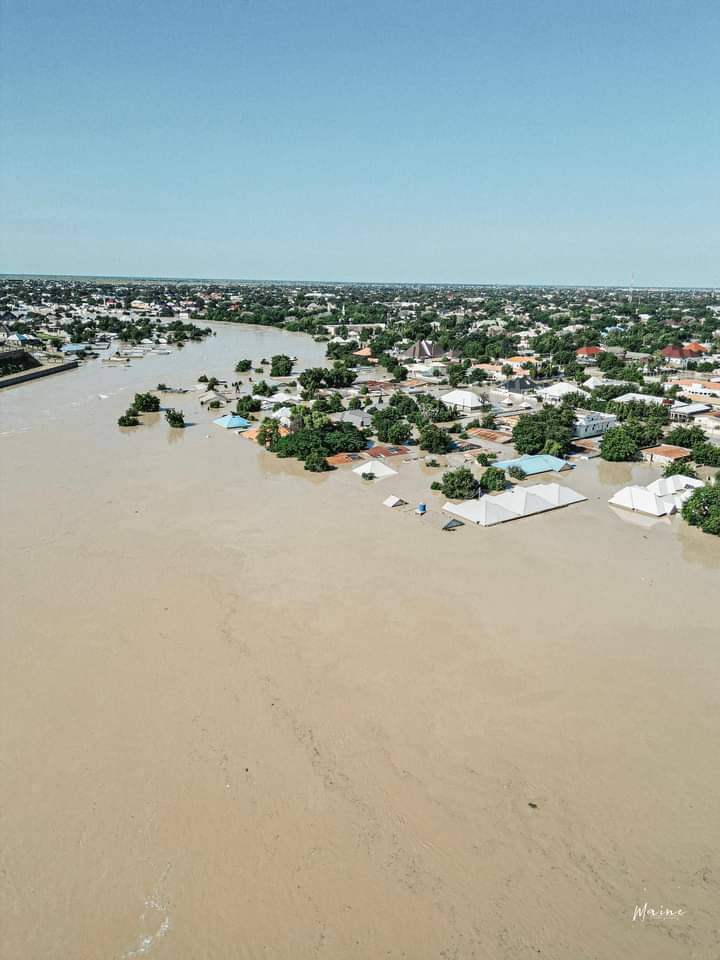
Flood in Maiduguri: Why we should learn from history
By Yusuf Adamu
30 years ago, there was the same incident in Maiduguri. I can recall my days as a pupil at the Yerwa Practice Primary School. The two rivers that brought floods to Maiduguri, which are the Gadabul and Ngada rivers, have their connecting points near our school. The deepest places we used to go and swim were near the Satus Hotel, a place we called ‘Buzaye’. Our seniors are the ones that go play around that area. We that are junior classes used to go near the veterinary clinic to play because it was not as deep as the area where Satus Hotel is currently situated.
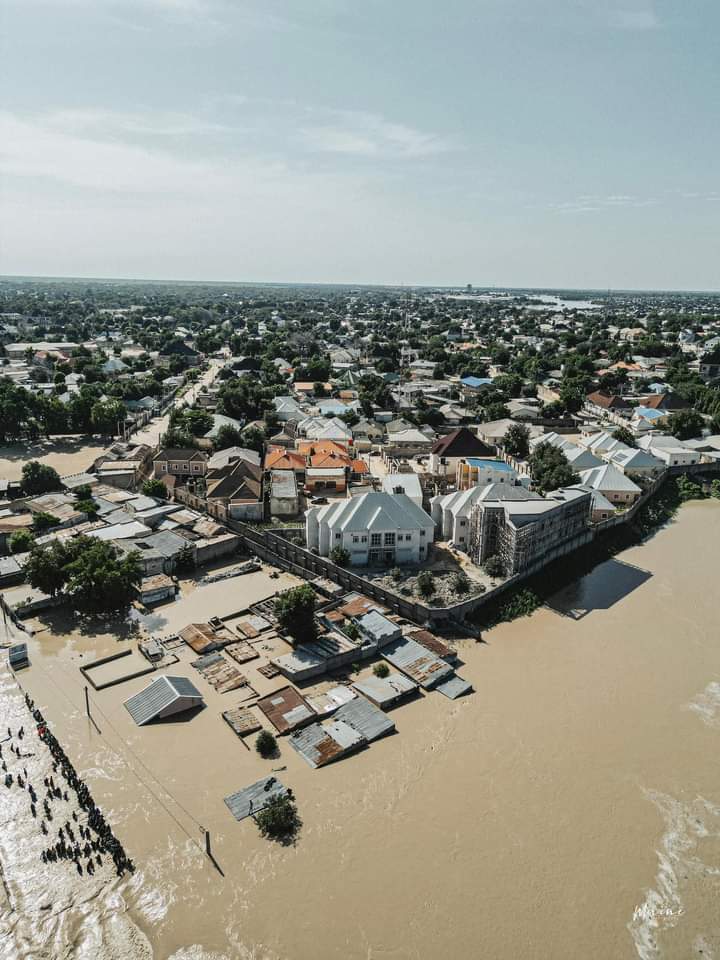
Before the government constructed the Lagos Street Bridge, people at that time used canoes for crossing to the other side and back. Also, there is a place between Gwange and Kulogumna where canoes used to ferry people across the rivers. The Custom Bridge and that of Gwange are one lane; as such, vehicles cross the bridge at a time, as it cannot take two to cross from the sides. Usually during the rainy season, the students, especially those who are living in town, are being asked to remain, while only children from GRA go to Yerwa Practice because the water usually cuts off people from either side. That is why, for me, I have classmates both at Yerwa Practice and Central Primary School. This is owing to the divide as a result of rain whenever it comes as such.
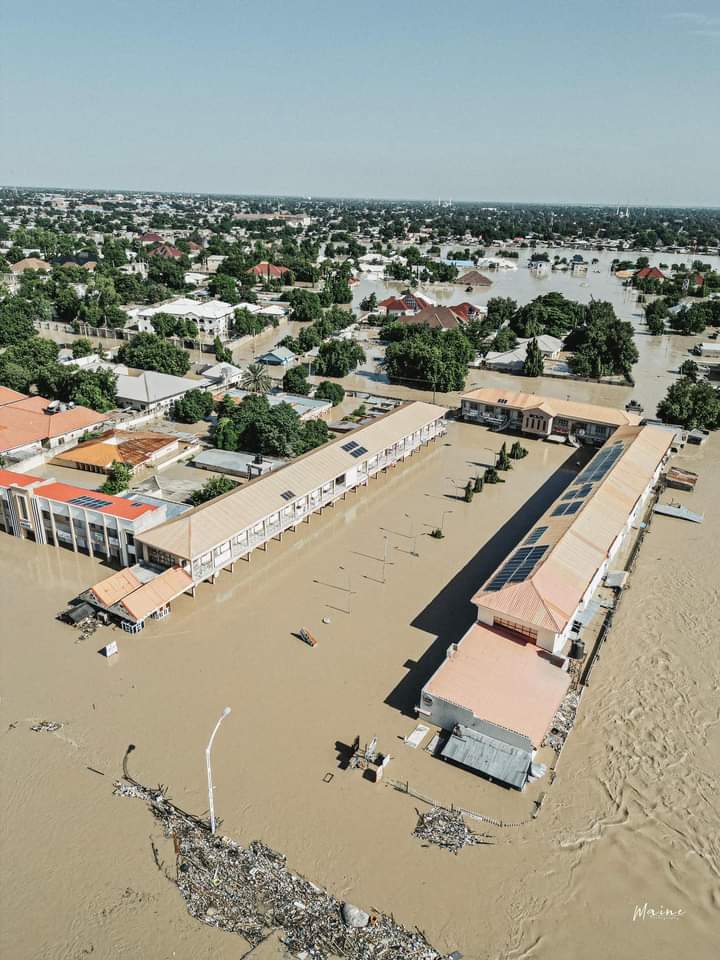
Today, the whole of the river banks are occupied by buildings due to the development of the city. People failed to check the history of these places where they buy plots and build their houses. They block the ways of the rivers, and there are no channels constructed in such a situation. One thing with rivers: they always come their way unless they are diverted. But in this situation and especially on Maiduguri, there are no such diversion or some sort of channels made in readiness for such a situation. People build indiscriminately and never remember that history has a place to play in building. This is the impact we are seeing today.
Today’s government, under the leadership of Professor Babagana Umara Zulum, has done well in the construction of roads and drainages in Maiduguri, which is supposed to bring ease to such a situation. But still, the people use such drainages as dumping grounds for waste. I was in Maiduguri recently, and looking at the efforts of the government, I said that with all these in place, flooding is not likely to takeover the state as it has for the last 30 years. People refused to take care of these drainages. They are not conscious of the surroundings and what is likely to happen in such a situation.
I recalled that at a point the state governor warned of indiscriminate building along the river banks and ordered the demolition of such illegal buildings, but the reaction from the people was something else. This has made the government retrace its steps towards averting such a disaster. The government, however, continued to educate the people on the need to keep their drainages open and to make ways within their communities for water passage, but they kept close ears to warning signs. If history has it 30 years ago, what makes the people think that it cannot be repeated? Why are we constantly in motion without counting the cost of motion? I think this should also be a lesson for our people to avoid in the future.
*Yusuf Adamu writes from Maiduguri
Flood in Maiduguri: Why we should learn from history
News
ADC Unveils Timetable, Guidelines for 2025/2026 Congresses, National Convention

ADC Unveils Timetable, Guidelines for 2025/2026 Congresses, National Convention
By: Michael Mike
The African Democratic Congress (ADC), has released a comprehensive timetable and guidelines for the conduct of its congresses and national convention for the 2025/2026 political year, as part of efforts to strengthen internal democracy and reposition the party ahead of future elections.
The guidelines are contained in a National Secretariat Circular dated December 30, 2025, and signed by the party’s National Chairman, Hon. Nafiu Bala Gombe.
According to the circular, the party’s activities will commence with a Board of Trustees (BoT) meeting scheduled for January 5, 2025, followed by a National Executive Committee (NEC) meeting on January 7, 2025.
Key agenda items at the NEC meeting include the filling of vacancies in the National Working Committee (NWC), the fixing of dates for membership registration and revalidation, and preparations for ward, local government and state congresses.
He said: “For 2026, the ADC announced that membership registration and revalidation will take place from January 2 to January 15. This will be followed by ward executive committee congresses on January 17, with matters arising to be addressed between January 19 and 22.
“Local government congresses are scheduled for January 24, while state executive committee congresses will be held on January 31, 2026. Matters Arising: February 2-5, 2026 National-Level Activities.
“National Working Committee Convention: d. The approved delegates to the State Congresses, as provided for in Article 24 (a) – (e) and specifically modified by a resolution of the NWC at its 17th December, 2026 in National
headquarters Abuja are as follows: Local Government Chairmen
“LGA Secretaries; Youth Leader; Women Leader; State Executive Committee members and National Executive Committee (NEC) members from the State; PWD Leader; Ex-Officio Member; All Elected Council Chairman and their Deputies; Board of Trustees Member; Zonal National Officer; Any Elected National / State Assembly Members; Legal Adviser.
“States shall constitute Congress Planning Committees, membership of which shall not include persons contesting for any of the state executive offices.
“All persons willing to contest for state offices shall register their intentions with the State Congress Committee with an intention Fees N2,000.00 (Two Thousand Naira Only) which the Congress Committee may utilize for the purpose of financing the congresses, in part.
“The State Executive Committee shall supervise the work of the Congress Planning Committee to ensure strict compliance with the guidelines on State Congresses.
“Approved composition and distribution of the State Executive Committee members should, as much as practicable, be carried out according to the Senatorial Zones and in compliance with the Party’s Constitutional provision (Article 5, 17):
“Senatorial Zone with the highest number of members (6 positions). Chairman; Asst. Secretary; Asst. Financial Secretary; Auditor; Organizing Secretary; Women Leader; Senatorial Zone with 2nd highest number of members (5 positions); Vice Chairman, Treasurer, Legal Adviser, Asst. Publicity Secretary, Asst.”
On zoning, the ADC disclosed that distribution of state executive committee positions should, as much as practicable, reflect senatorial zones and comply with the party’s constitutional provisions.
The party’s National Working Committee convention is slated for February 13 to 15, 2026.
The party emphasised that only validly registered or revalidated members whose names appear in the official membership register will be eligible to participate in the congresses, in line with provisions of the ADC constitution.
State chapters were also directed to formally notify the National Secretariat of the dates, venues and times of their congresses to enable proper communication with the Independent National Electoral Commission (INEC).
He said: “The criteria for qualification to contest for executive positions in the State Executive Committee are as follows: At least, attendance of Secondary School; The Offices of State Legal Adviser, Treasurer and Financial Secretary should have experiences in their respective professions; else the offices should be occupied by persons best deemed suitable.
“The Office of the State Youth Leader must NOT be more than 25 years while that of the State Woman Leader is exclusively reserved for Women.
“All pre-congress appeals shall be determined not later than 24 hours before the congresses while all appeals consequent upon the congresses shall be determined within 3 days after the congresses.
“The Congress Planning Committee shall submit reports of congresses to the National Secretariat via adcnationalcongressreformcommitee@gmail.com not later than 5 working days after the congresses.”
The party urged members and state chapters to strictly adhere to the guidelines to ensure transparent, credible and orderly congresses nationwide.
ADC Unveils Timetable, Guidelines for 2025/2026 Congresses, National Convention
News
Multiple terrorists neutralised in Sambisa as coordinated strikes unsettle ISWAP commanders
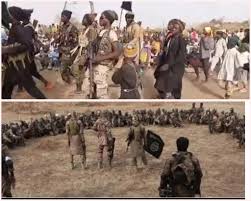
Multiple terrorists neutralised in Sambisa as coordinated strikes unsettle ISWAP commanders
By: Zagazola Makama
Fresh intelligence emerging from the Sambisa Forest indicates significant disarray within the Islamic State West Africa Province (ISWAP) following a series of coordinated ground and aerial strikes by Nigerian forces that dislodged key terrorist hideouts and neutralised dozens of fighters at the turn of the new year.
Zagazola Makama report that on Jan. 2, 2026, intercepted intelligence revealed growing concern among senior ISWAP commanders, including Jundullah and Ibn Hataf, after troops launched a surprise and “deadly” assault on the Balangaje hideout deep inside the Sambisa Forest on Jan. 1.
According to the sources, the Balangaje position described as a long-standing ISWAP enclave was completely overrun by the troops of Operation HADIN KAI, forcing surviving fighters to flee in disarray to other parts of the forest.
The commanders reportedly admitted that their forces were caught unprepared, resulting in a chaotic retreat in which many fighters were cut off and forced to escape individually, abandoning weapons, logistics and command structures.
More critically, the terrorists expressed concern over the fate of several senior commanders who have remained unaccounted for since the assault, raising strong indications of leadership casualties or severe command-and-control breakdown.
Security sources confirmed that the ground assault on Balangaje was launched by forces of 21 Armored Brigade operating in Nguro Soye in Bama Local Government Area.
Zagazola report that this ground success was decisively reinforced by precision air operations conducted under Operation Hadin Kai (OPHK), marking what one source described as a “welcome to 2026” for insurgent groups operating in the North-East.
On Jan. 1, following authorisation by OPHK, air assets engaged multiple high-value terrorist targets across Sambisa, Gava and the wider OPHK Area of Responsibility.
At about 0027 hours, an armed aircraft code-named Dragon, carried out a precision strike on a building with solar panels at Chiralia, identified as a terrorist logistics and command facility. Battle Damage Assessment (BDA) confirmed the structure was engulfed in flames, with secondary explosions suggesting the presence of stored fuel, explosives or logistics caches.
Further ISR operations tracked suspected Boko Haram Terrorists converging between rocky outcrops in the Gava axis. At approximately 0035 hours on Jan. 2, a precision strike was authorised and executed on the identified coordinates, with Battle Damaged Assessment confirming that about 11 suspected terrorists were neutralised.
Minutes later, surveillance assets observed about 10 additional terrorists fleeing the Gava settlements in panic after hearing the explosions. Continuous tracking revealed another convergence of about eight fighters under a tree, prompting a second precision strike at about 0114 hours.
BDA from the second engagement indicated that the eight terrorists were neutralised, while others fled in different directions. A secondary explosion was again observed near the strike point, reinforcing assessments that the location served as a weapons or logistics cache.
In a related operation, ISR assets identified a large concealed structure covered by trees and fitted with materials suspected to be solar panels, alongside a smaller adjoining building. Following clearance, the larger structure was engaged at about 0229 hours on Jan. 2, with BDA confirming its complete destruction.
Security analysts say the cumulative impact of these strikes has been profound. Beyond the immediate neutralisation of fighters, the operations degraded ISWAP’s logistics, energy supply, shelter and command infrastructure, while also exposing vulnerabilities in what had been considered secure forest hideouts.
The fact that ISWAP commanders are openly worried about missing senior leaders is significant. It points to either high-value casualties or a breakdown in their internal communication, both of which weaken their operational effectiveness.
The Sambisa Forest, once the symbolic and operational heartland of Boko Haram factions, has increasingly become a contested battlespace, with sustained intelligence-driven operations denying terrorists the freedom to regroup or reorganise.
The latest operations also illustrated the growing synergy between ground surface forces and air assets, particularly ISR-enabled precision strikes that exploit real-time intelligence to devastating effect.
The loss of Balangaje and the destruction of multiple hideouts across Chiralia, Gava and IRONS GATE axes further compress ISWAP fighters into smaller, more exposed pockets, increasing the likelihood of defections, internal fragmentation and further leadership losses.
As of press time, operations across the Sambisa Forest were ongoing.
The latest successes reaffirm the momentum of Operation Hadin Kai and suggest that insurgent groups entering 2026 are doing so under sustained pressure, shrinking space and growing internal anxiety over survival.
Multiple terrorists neutralised in Sambisa as coordinated strikes unsettle ISWAP commanders
News
Gunmen abduct village head in Kwara, wife injured
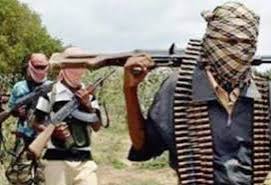
Gunmen abduct village head in Kwara, wife injured
By: Zagazola Makama
Gunmen have abducted the village head of Afin community in Babanla area of Kwara State, injuring his wife during the attack.
Security sources said the incident occurred at about 10:00 a.m. on Jan. 2, when the assailants invaded Afin Village via Babanla, firing sporadically to scare residents.
The sources said the attackers whisked away the village head, Oba Simeon Olaonipekun, while his wife sustained gunshot injuries during the attack.
She was rushed to the General Hospital, Omu-Aran, for medical treatment.
Following the incident, security personnel and local vigilantes were mobilised to the area to track the assailants and rescue the abducted traditional ruler.
The sources said the scene of the incident was visited as efforts continued to trail the gunmen and prevent further attacks in the area.
Investigation into the abduction, the sources added, was ongoing.
Gunmen abduct village head in Kwara, wife injured
-

 News2 years ago
News2 years agoRoger Federer’s Shock as DNA Results Reveal Myla and Charlene Are Not His Biological Children
-

 Opinions4 years ago
Opinions4 years agoTHE PLIGHT OF FARIDA
-

 News9 months ago
News9 months agoFAILED COUP IN BURKINA FASO: HOW TRAORÉ NARROWLY ESCAPED ASSASSINATION PLOT AMID FOREIGN INTERFERENCE CLAIMS
-

 Opinions4 years ago
Opinions4 years agoPOLICE CHARGE ROOMS, A MINTING PRESS
-
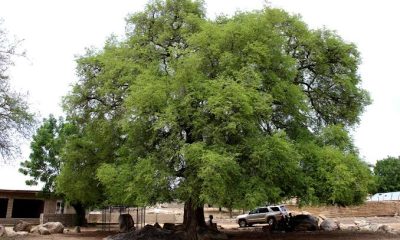
 News2 years ago
News2 years agoEYN: Rev. Billi, Distortion of History, and The Living Tamarind Tree
-

 ACADEMICS2 years ago
ACADEMICS2 years agoA History of Biu” (2015) and The Lingering Bura-Pabir Question (1)
-

 Columns2 years ago
Columns2 years agoArmy University Biu: There is certain interest, but certainly not from Borno.
-

 Opinions2 years ago
Opinions2 years agoTinubu,Shettima: The epidemic of economic, insecurity in Nigeria





